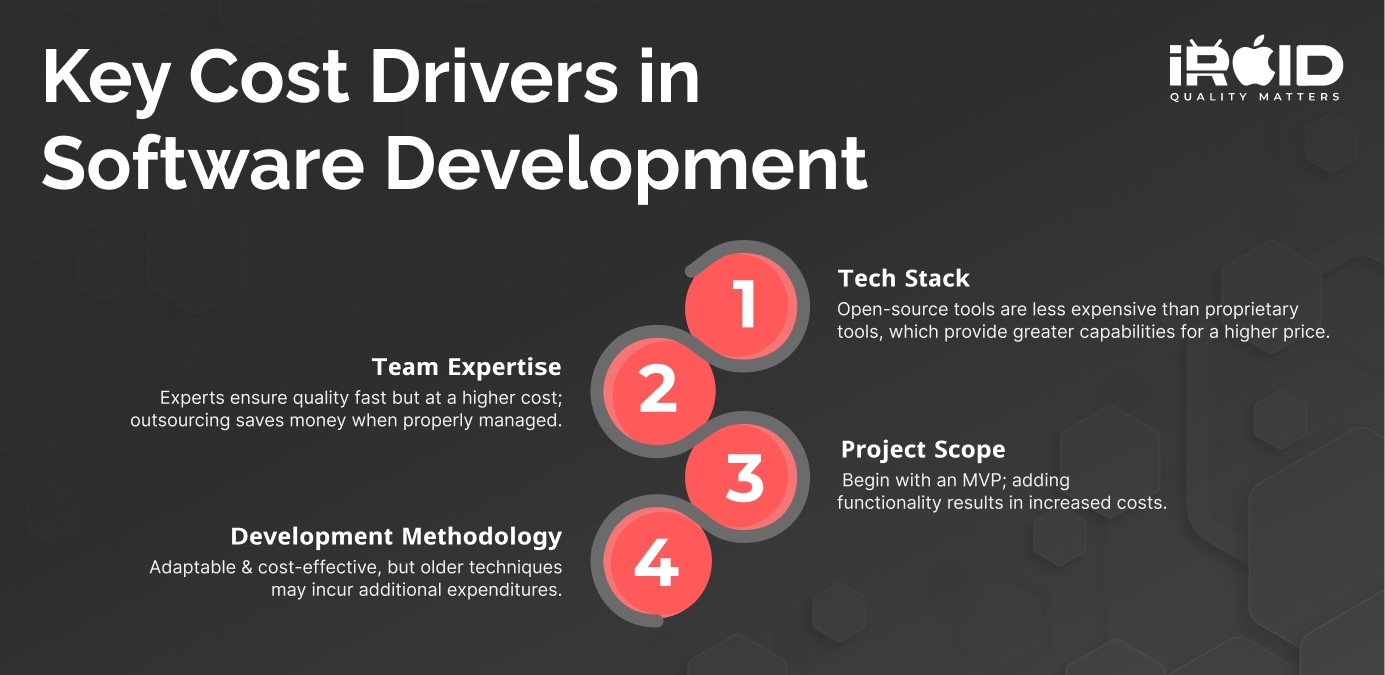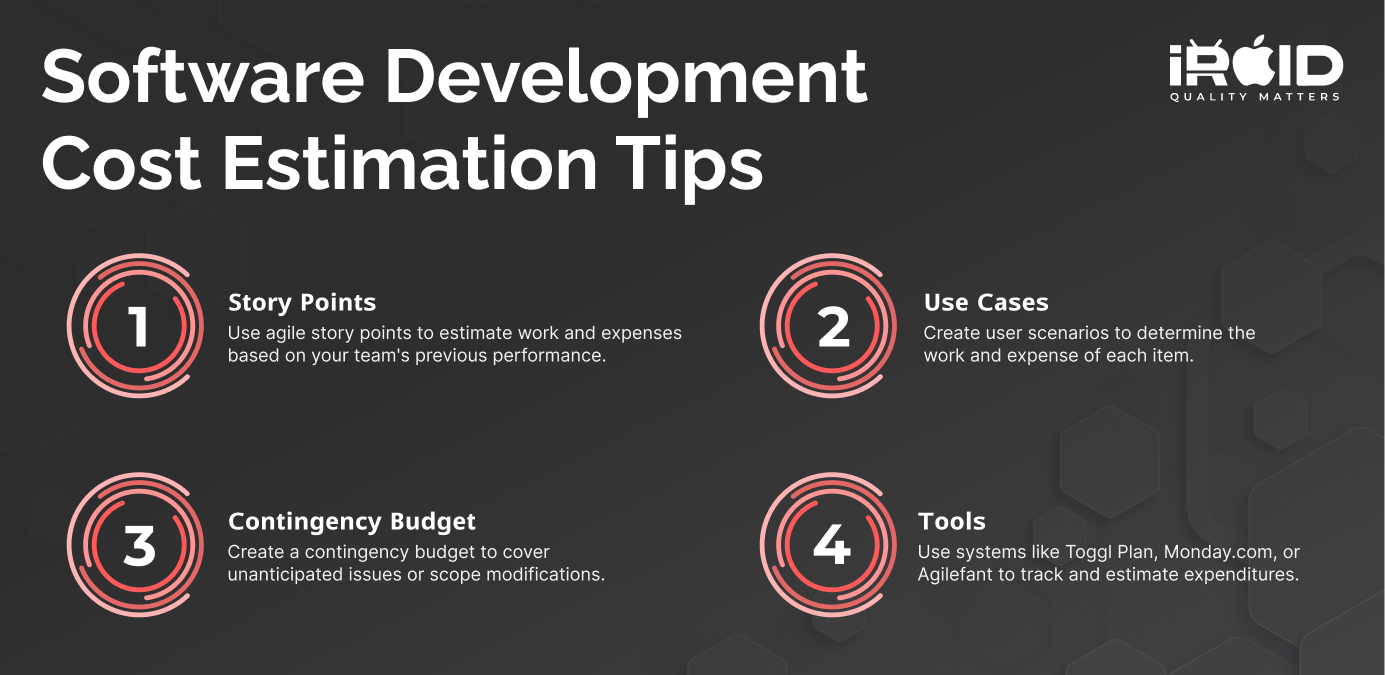Introduction
In today's rapidly evolving digital landscape, software development plays a crucial role for businesses of all sizes. Understanding the cost of software development is essential for effective budgeting, decision-making, and successful project outcomes. In this comprehensive guide, we will explore the key factors that influence software development costs, understand project complexity, identify the major cost drivers, highlight additional cost considerations, provide insights into cost estimation and budgeting, and conclude with valuable tips for minimizing development costs without compromising quality.
I. Understanding Project Complexity
Project complexity is a critical factor that significantly impacts development time and cost. In the context of software development, complexity refers to the intricacy and sophistication of a project. It's essential to recognize that complexity can vary greatly based on the scope and technical requirements of the software being developed.
To illustrate the concept of project complexity, let's consider a few examples:
• Low Complexity: Building a simple landing page or a basic mobile app with limited functionality falls under low complexity projects. These projects typically require minimal effort and can be completed within a short timeframe at a relatively lower cost.
• Medium Complexity: Developing a custom e-commerce platform with features such as product search, shopping cart, and payment integration involves more intricate coding and requires dedicated development resources. The cost and time required for such projects are higher compared to low-complexity projects.
• High Complexity: Creating a complex enterprise software solution that integrates multiple systems, handles large datasets, and supports complex business logic represents a high complexity project. These projects demand a significant investment of time, expertise, and resources, resulting in higher development costs.
Understanding the level of complexity early on allows for accurate cost estimation and better resource allocation.
II. Key Cost Drivers

To comprehend software development costs fully, it's crucial to identify the key drivers that influence them. Let's delve into the major cost drivers and explore how they impact your project budget.
Technology Stack
Choosing the right technology stack, including programming languages, frameworks, and tools, can significantly impact development costs. While some technologies are free and open-source, others may require licensing or subscription fees.
Open-source solutions, like Python or Ruby, offer cost advantages as they're community-driven and have extensive libraries and frameworks available. Proprietary solutions, on the other hand, can provide enhanced support and specialized features but come at a higher cost.
Team Expertise
The level of expertise and experience of your development team plays a vital role in determining software development costs. Costs can vary based on location, as different regions have different developer rates. Opting for developers with extensive experience and expertise may come at a higher cost but can accelerate your project timeline and improve overall quality.
Another consideration is whether to choose in-house development or outsource the project. In-house teams provide more direct control and seamless collaboration but may involve higher overhead costs. Outsourcing offers access to a global talent pool, often at a more cost-effective rate, but requires careful communication and management.
Project Scope & Features
The scope and intricacy of your project, including the number of features and functionalities, directly influence development costs. Adding more features and complex functionalities naturally increases development time, effort, and associated expenses. It's essential to strive for clear feature definition and prioritization to avoid unnecessary costs and ensure project efficiency.
Defining a minimum viable product (MVP) early on can help allocate resources effectively and minimize development costs in the initial stages. By focusing on essential features and gradually expanding upon them, you can manage costs while delivering value to your users.
Development Methodology
The choice of development methodology can have a significant impact on costs and overall project success. Traditional waterfall development follows a sequential approach, with each stage completed before advancing to the next. While this methodology offers predictability, change requests or modifications can be costly and time-consuming.
Agile development methodologies, such as Scrum or Kanban, promote iterative and flexible development. This approach allows for continuous feedback, adaptation, and early identification of potential issues, minimizing risks and unnecessary expenses.
Adopting an agile approach also enables cost-effective testing and deployment, as continuous integration and deployment practices automate these processes, ensuring faster delivery and reduced time to market.
III. Additional Cost Considerations

While the key cost drivers outlined above cover crucial aspects of software development costs, there are a few additional considerations to keep in mind:
UI/UX Design
User-friendly design significantly contributes to the success of any software product. However, designing an intuitive user interface and delightful user experiences requires expert design skills and may involve additional costs. You have several options, such as hiring in-house designers, collaborating with freelance talent, or engaging design agencies. Each option has its merits, and the choice depends on your budget, project requirements, and desired level of design expertise.
Maintenance & Support
Software development costs extend beyond the initial development phase. Ongoing maintenance, bug fixes, updates, and introducing new features contribute to long-term expenses. It's crucial to allocate a portion of your budget for post-development support to ensure the software remains functional, secure, and up-to-date. Implementing strategies for minimizing long-term maintenance costs, such as efficient bug-tracking systems and regular version updates, can help mitigate expenses.
Project Management
Efficient project management plays a vital role in controlling costs and ensuring project efficiency. Dedicated project managers are responsible for overseeing the development process, managing resources, and ensuring timely delivery. While hiring dedicated project managers adds to the project's budget, their expertise and experience can help prevent cost overruns, streamline processes, and enhance team collaboration. Alternatively, project management tools can provide cost-effective solutions for managing project timelines, tasks, and resources.
IV. Cost Estimation & Budgeting
Accurate estimation and budgeting are crucial for successful software development projects. Here are some methods and considerations to help you estimate software development costs effectively:
• Story Points: Utilizing agile methodologies, story points provide a relative estimation of the effort required for different features or tasks. Assigning story points to each item enables you to estimate costs based on the team's historical velocity.
• Use Cases: Defining detailed use cases helps estimate development efforts based on specific user scenarios and interactions. By analyzing the complexity and effort associated with each use case, you can derive accurate cost estimates.
To ensure budgeting covers unexpected costs, it's crucial to plan for contingencies. Unforeseen challenges or scope changes during development can impact cost and schedule. Set aside a contingency budget to accommodate these variables and safeguard against potential budget overruns.
Several online resources and tools are available to assist with cost estimation and budgeting. Tools like Toggl Plan, Monday.com, or Agilefant offer features to track development tasks, allocate resources, and estimate costs. Utilizing these resources can streamline the estimation process and provide valuable insights for budgeting purposes.
Conclusion
Understanding software development costs is crucial for business success in the digital landscape. Factors such as project complexity, technology stack, team expertise, and features significantly influence development time and expenses. Additionally, UI/UX design, maintenance, support, and project management contribute to overall costs. Efficient cost estimation, budgeting techniques, and a focus on quality are essential for effective planning and control. Collaborating with development partners like iRoid Solutions ensures a cost-effective and successful software development journey. For further assistance, contact us.
Blog Related FAQs:
Key factors include project complexity, technology stack, team expertise, project scope, and development methodology.
Ongoing costs include maintenance, updates, bug fixes, and introducing new features to keep the software secure and functional.
Open-source stacks are cost-effective, while proprietary solutions may require licensing fees but offer specialized support.
An MVP (Minimum Viable Product) focuses on essential features, enabling faster development and cost savings while delivering value early.
Define clear project requirements, prioritize features, choose cost-effective technologies, and collaborate with experienced development partners like iRoid Solutions.
Recent Blog Posts
Get in Touch With Us
If you are looking for a solid partner for your projects, send us an email. We'd love to talk to you!














